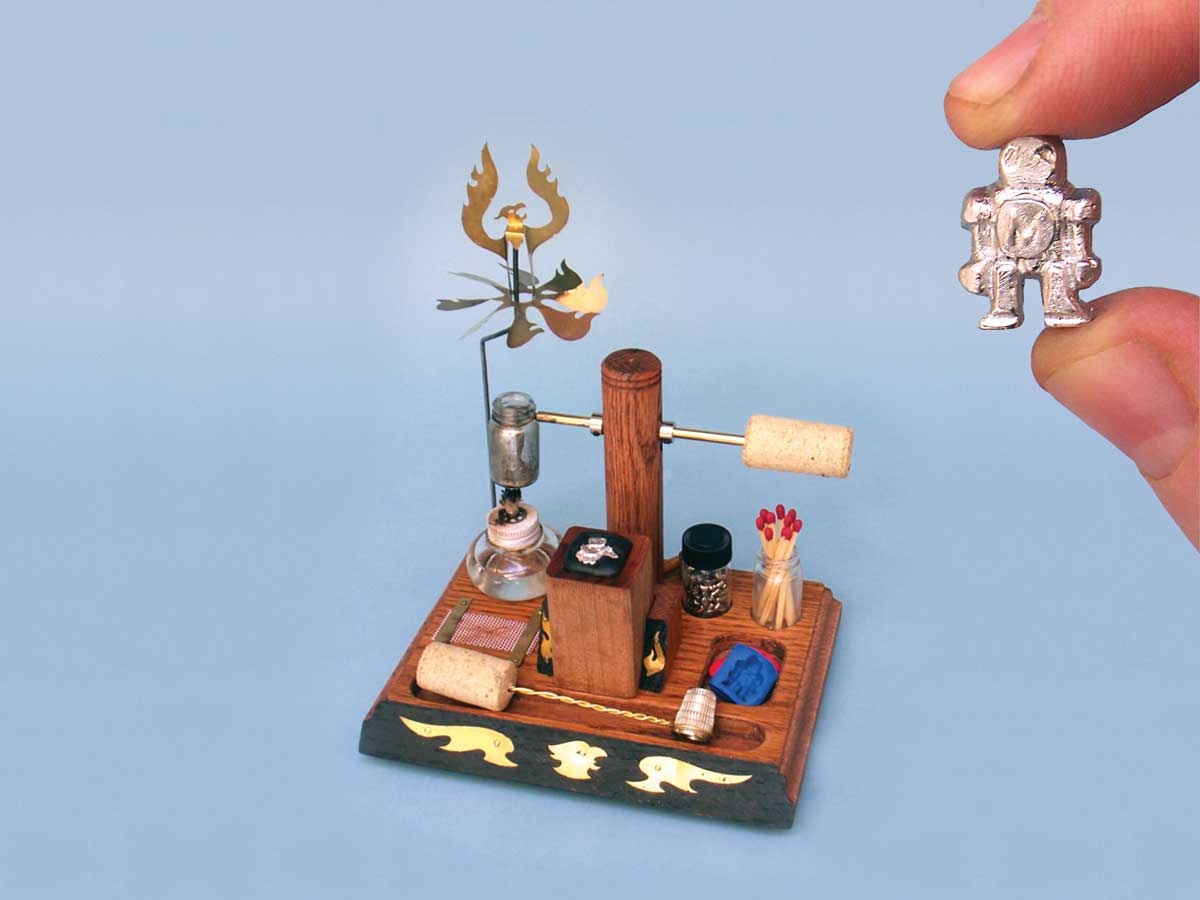Here’s another “meta-project:” a DIY project that in turn makes other projects. It’s a miniature, working foundry that casts real metal parts safely on your desktop. Make custom jewelry, tiny trinkets, diecast-style game tokens — then remelt them and recast, again and again.

What makes it all possible is a special eutectic alloy, Field’s metal, which melts at an amazingly low 144°F (about the temperature of hot coffee). Unlike other low melting temperature metals, this alloy of bismuth, indium, and tin contains no lead or cadmium and is safe and nontoxic.
The basic foundry is made from wood and metal along with a few scrounged household parts. If you’re up for a challenge, you can also dress up your Desktop Foundry with some snazzy brass trim and a twirling phoenix turbine, just for fun.
The simple foundry design has a center shaft mounted vertically on a wooden base. The shaft swivels 90° to move the crucible from the heating lamp over to the mold. The cork handle swivels to tilt the crucible and pour the molten metal into the mold below. There’s also storage for molds, metal, and matches. This tiny foundry uses a thimble for a wick snuffer.



